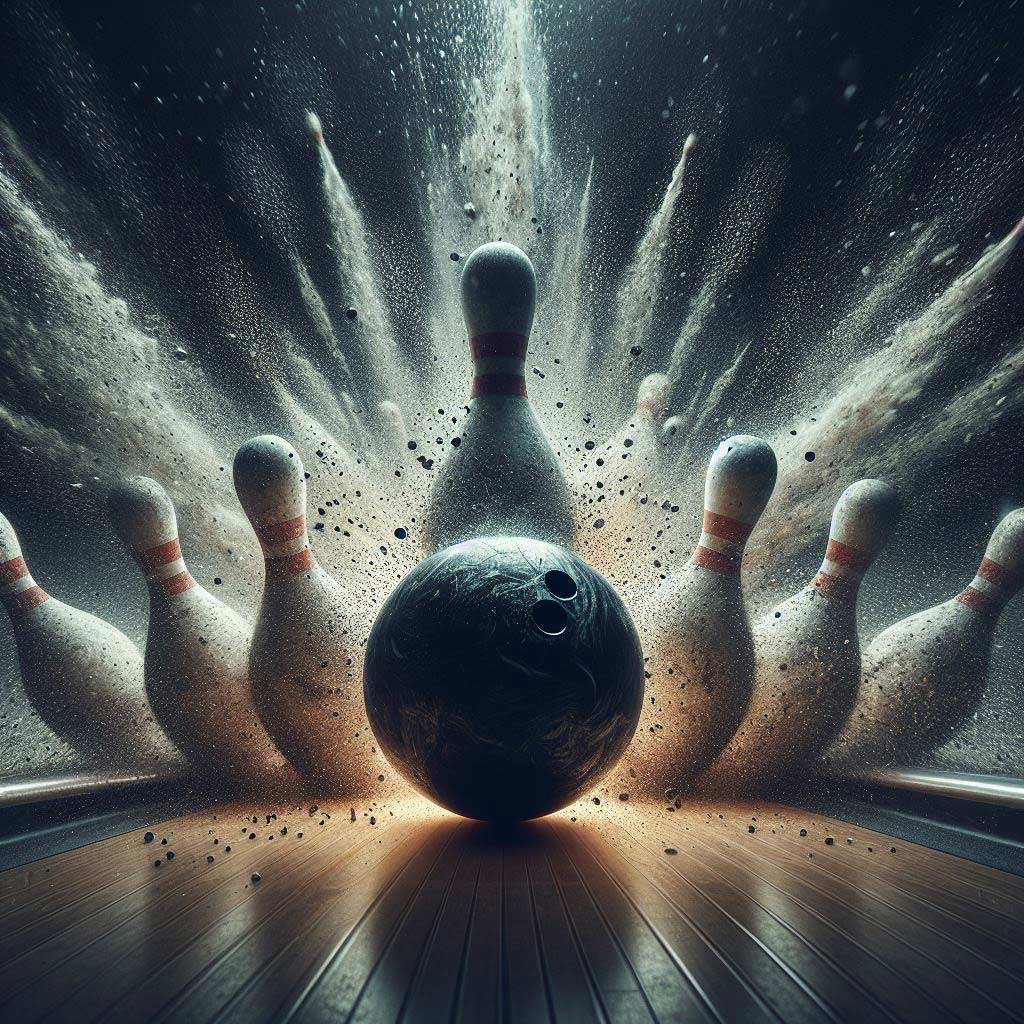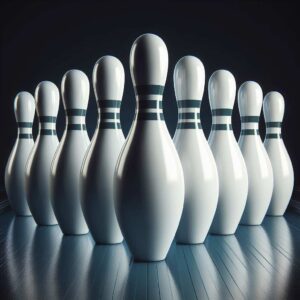Bowling is a beloved sport and recreational activity enjoyed by millions worldwide. Whether you’re a seasoned league bowler or a casual alley visitor, understanding the rules and etiquette of bowling is crucial for an optimal experience.
This comprehensive guide covers everything you need to know about bowling rules, from lane specifications and gameplay regulations to equipment guidelines and professional tournament standards. Buckle up and get ready to master the ins and outs of this timeless game!
Bowling Lane Specifications
At the heart of any bowling alley lies the lane – a finely crafted surface designed to provide a fair and consistent playing field. Standard bowling lanes measure 60 feet (18.29 meters) in length and 42 inches (1.07 meters) in width.
The gutters on either side of the lane are designed to catch errant balls, while the foul line marks the boundary beyond which a player cannot step during their delivery.
One of the most critical aspects of a bowling lane is the oil pattern. Lanes are dressed with a specific oil distribution pattern that affects the ball’s motion and trajectory.
Different oil patterns can create various levels of challenge, from relatively easy “house” patterns to the demanding and intricate patterns used in professional tournaments.
Bowling Ball Specifications
Just as important as the lane itself is the bowling ball. Approved balls for sanctioned play must weigh between 6 and 16 pounds (2.72 to 7.26 kilograms) and have a circumference no greater than 27 inches (68.58 centimeters).
The choice of ball weight is crucial, as it affects the player’s ability to generate the desired level of power and rev rate (the ball’s revolution rate upon release).
Bowling balls are constructed with a dense core covered by an outer shell known as the coverstock. The core and coverstock materials, along with the ball’s drilling layout (the placement and angle of the finger and thumb holes), contribute significantly to the ball’s overall reaction and performance on the lane.
Gameplay Rules
At its core, the objective of bowling is to knock down as many pins as possible with each roll of the ball. A strike is achieved when all ten pins are knocked down on the first roll of a frame.
A spare is scored when all pins are knocked down after two rolls in the same frame. An open frame occurs when one or more pins are left standing after two rolls.
Scoring in bowling is based on a combination of strikes, spares, and the number of pins knocked down on each roll. A strike is worth 10 points plus the value of the next two rolls, while a spare is worth 10 points plus the value of the next roll. Consecutive strikes (known as a “turkey”) can quickly escalate a bowler’s score.
One of the most important rules in bowling is the foul line violation. If a bowler’s foot (or any part of their body) crosses the foul line during their delivery, the roll is considered a foul, and any pins knocked down on that roll do not count.
Lane Courtesy and Etiquette
Proper lane etiquette is essential for maintaining a respectful and enjoyable bowling environment. When it’s not your turn to bowl, it’s crucial to remain behind the approach area and avoid any distractions that could disrupt the bowler on the lane. This includes controlling loud voices, excessive movement, or any other potential sources of distraction.
It’s also essential to wait for the bowler on the lane to complete their frame before stepping onto the approach area. Crossing the foul line or retrieving a bowling ball while someone is actively bowling can be dangerous and is generally considered poor etiquette.
Additional Rules and Formats
Bowling can be enjoyed in various formats, each with its own set of rules and regulations. In handicap or league bowling, players are assigned a handicap based on their average score, which is used to level the playing field and promote fair competition.
Different formats, such as team, doubles, or singles events, may have specific rules regarding the number of players on each team, the order of bowling, and the scoring methods used.
One notable format is the Baker system, where multiple bowlers from the same team alternate frames. In this format, the first bowler completes the first and sixth frames, the second bowler bowls the second and seventh frames, and so on, creating a unique team dynamic.
Equipment Rules and Regulations
Bowling equipment is subject to strict rules and regulations to ensure fair play and maintain the integrity of the sport. Approved ball cleaning methods, such as the use of certified cleaners and polishes, are essential to maintain the ball’s performance and comply with regulations.
Ball surface adjustments, such as the application of textured surfaces or the use of abrasive materials, are also regulated to prevent unfair advantages.
Additionally, there are specific rules regarding the types of inserts or slugs (weights added to the ball’s core) that are permitted, as they can significantly impact the ball’s reaction on the lane.
Tips for New Bowlers
For those new to the sport, mastering proper technique and form can greatly enhance their bowling experience. One of the most important aspects is foot positioning and approach.
Establishing a consistent and balanced approach, with the final step landing on the same spot each time, can greatly improve accuracy and consistency.
Proper grip and release are also crucial. Most bowlers use a conventional grip, with the thumb inserted into the ball’s thumb hole and the fingers gripping the opposite side of the ball. The release should be smooth and controlled, with the ball rolling off the fingers and onto the lane without any excessive loft or spin.
Consistent aim and release are key to producing repeatable shots and improving scoring potential. New bowlers should focus on developing a consistent arm swing and release point, while keeping their eyes focused on the intended target area.
Tournament and Professional Rules
For those aspiring to compete at a higher level, it’s essential to understand the rules and regulations governing competitive and professional bowling tournaments. Various governing bodies, such as the United States Bowling Congress (USBC) and the American Bowling Congress (ABC), oversee and enforce these rules.
Professional tournaments often have stringent dress code requirements, including specific guidelines for bowling attire, such as collared shirts and dress slacks or skirts.
Equipment regulations may also be more stringent, with specific restrictions on ball specifications, surface adjustments, and approved cleaning products.
Additionally, professional tournaments may employ challenging lane oil patterns and scoring formats designed to test the skills and strategy of the highest-level bowlers. Understanding these nuances and being prepared to adapt to varying conditions is essential for success in competitive bowling.
Summary
Whether you’re a casual bowler or a seasoned pro, mastering the rules and etiquette of bowling is crucial for an enjoyable and fair experience. From understanding lane and ball specifications to adhering to proper etiquette and respecting the regulations governing equipment and competitive play, this comprehensive guide has covered the essentials.
Remember, responsible bowling is not just about following the rules – it’s about respecting the game, your fellow bowlers, and the bowling community as a whole. By embracing these principles, you’ll not only improve your skills and knowledge but also contribute to the enduring legacy of this beloved sport.
For those seeking to deepen their understanding of bowling rules and regulations, consulting official resources from governing bodies like the USBC and ABC is highly recommended. Additionally, joining a local bowling league or seeking guidance from experienced coaches can provide invaluable insights and help you take your game to new heights.





